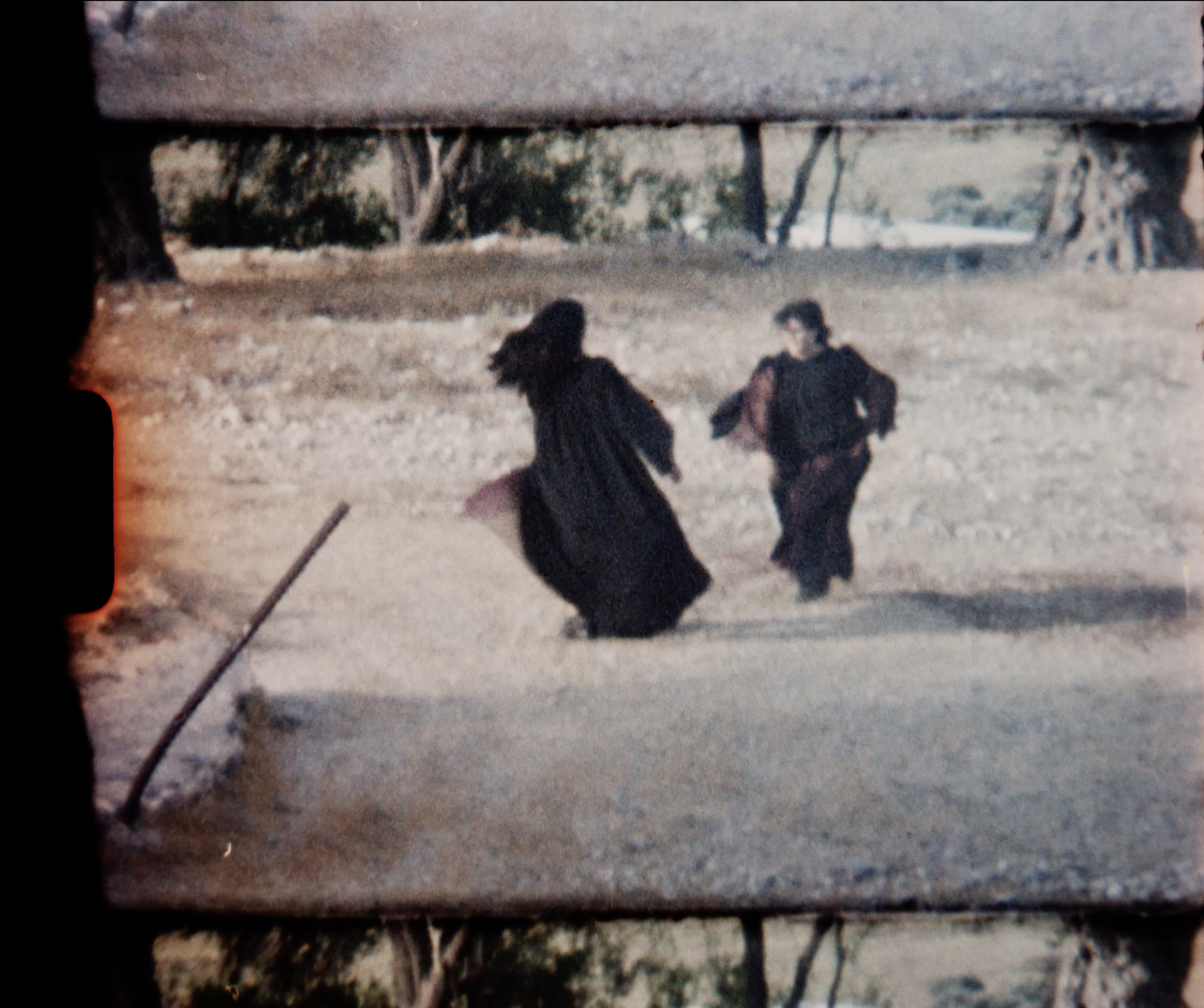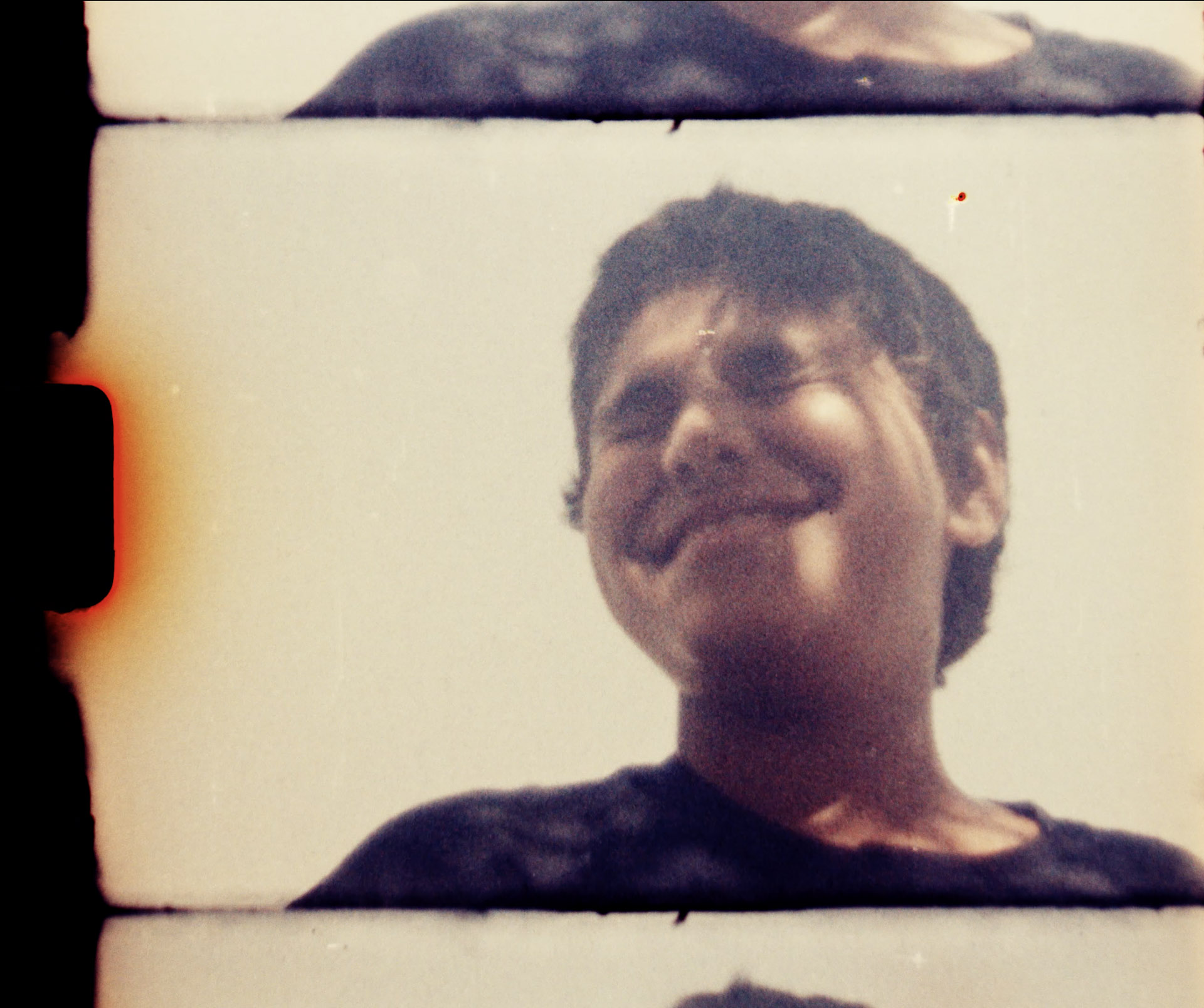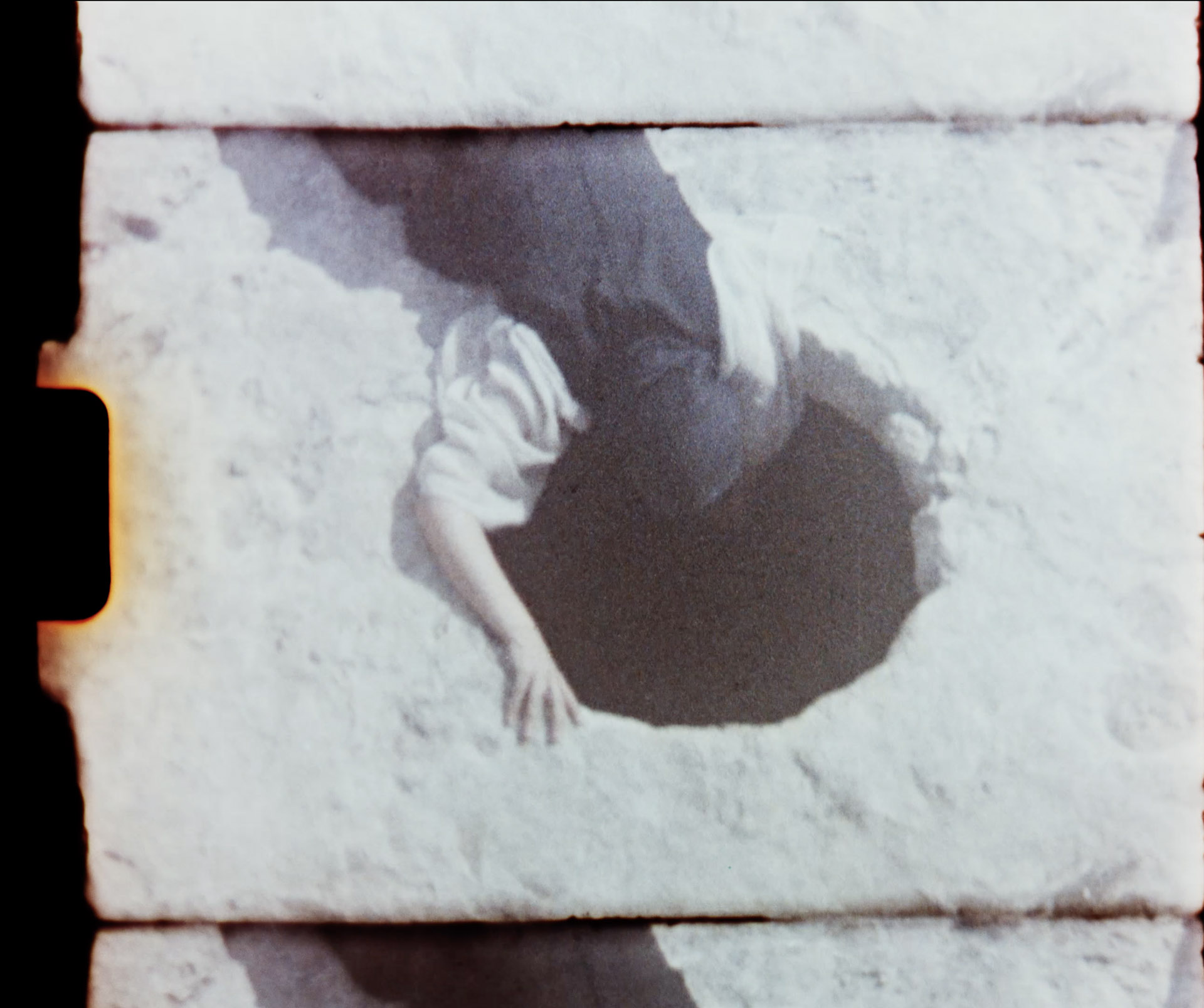Green, how I want you green.
Green wind. Green branches.
The ship out on the sea
and the horse on the mountain.
–Federico García Lorca
This series of films departs from a conversation on landscape in the poetry of Federico Garcia Lorca and Mahmoud Darwish. It posits landscape as a place of connection as well as a reflection on memory, distance, and exile. The figure of the olive tree connects a wide Mediterranean region through millennia of parallel agricultural ritual and ecological coexistence. The olive branch is known as a symbol of peace while residing in a region that has been cut apart and divided.
Trees are a living archive of the land. Olive trees can live up to thousands of years, making them a stable and familiar element for generations of their neighbours. The olive branch is a symbol of peace whose stable grip has been wrested from the soil. They are also targets in the ongoing catastrophe in Palestine that is impossible not to speak of.
***
The grainy surface of Noor Abed’s rough uncut super 8mm film format contains seeds of the timeless and atemporal realm of folktales and ancestrality. The analogue camera captures textures of cut stone and ruinous structures that carry the presence of history. As characters appear among them, an abstract aesthetic narrative appears through an unravelling sequence of sound and image. The use of vintage film equipment and the cooperation with amateur actors references the politically produced lack of cultural archives for a region whose history has been under constant attempts of systematic erasure for over a century. The effacing of Palestinian culture and popular customs is actively reclaimed through Abed’s reconstructed visual sequences. The film’s performers act in collective repetitions of dance and gesture that mirror rituals of mourning and memorial through emblematic arid landscapes and shaded olive groves.
Easily mistaken for documentary sequences, the participants of Abed’s films enact Palestine’s connection to its literary history and popular cultural that is a product of centuries of communities in contact with the land. Reclaiming peasant dances that communicate with the landscape, the connection between the earth and the body manifests in dream-like sequences that evoke the region’s magical imaginary. The often spotty preservation of these types of stories are often found as compilations, but fail to pass down the constantly mutating and acted formats of oral history as they are performed from one generation to the next. The absence of a unifying narrative in the film allows for various interpretations of the scenes that remain decidedly elusive.
Noor Abed is an interdisciplinary artist and filmmaker. She attended the Whitney Independent Study Program in Νew York in 2015-16, and the Home Workspace Program (HWP) at Ashkal Alwan in Beirut in 2016-17. She received her BA from the International Academy of Arts in Palestine and a MFA from the California Institute of the Arts, Los Angeles. She was a resident at the Skowhegan School of Painting and Sculpture in Maine (2014) and a fellow in documenta (13)’s “Department of Maybe Educatiοn and Public Programs” in Kassel, Germany. A finalist and a third prize-winner in the 2014 Young Artist Award, she was awarded the March Project residency and commission from Sharjah Art Foundation (UAE) in 2016. Abed was awarded residencies at the Cité Internationale des Arts in Paris (France) in 2018, the Ujazdowski Center for Contemporary Art in Warsaw (Poland) in 2020, and Raw Material Company in Dakar (Senegal) in 2019, among others. In 2020, she co-founded, with Lara Khaldi, the “School of Intrusions,” an independent educational platform in Ramallah, Palestine. Abed is currently exploring the critical stance of ‘folklore’ as a source of knowledge, and its possible connection to alternative social and representational models in Palestine.
Àngels Miralda (1990) is an independent writer and curator. Her recent exhibitions have taken place at Something Else III (Cairo Biennale); Garage Art Space (Nicosia); Radius CCA (Delft), P////AKT (Amsterdam), Tallinn Art Hall (Estonia), MGLC – International Centre for Graphic Arts (Ljubljana), De Appel (Amsterdam), Galerija Miroslav Kraljevic (Municipal Gallery of Zagreb), the Museum of Contemporary Art of Chile (Santiago), Museu de Angra do Heroísmo (Terceira – Azores), and the Latvian Centre for Contemporary Art (Riga). Miralda wrote for Artforum from 2019-2023 and regularly publishes with Terremoto (Mexico City), A*Desk (Barcelona), Arts of the Working Class (Berlin), and is editor-in-chief of Collecteurs (New York).




